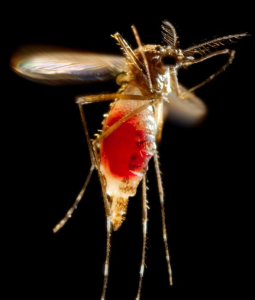Chikungunya total on St. Maarten increases to 10
The number of confirmed chikungunya fever cases reported on the Dutch Side of the island of St. Martin has jumped to 10, prompting health officials to start a country-wide clean up starting Saturday, according to a Daily Herald report Jan. 21.

Image/CDC
This total is up from two cases reported in a European Centre for Disease Prevention and Control (ECDC) Epi Update released Monday.
Maurice Lake, St. Maarten Minister of Public Housing, Spatial Planning, Environment and Infrastructure said that they will start getting rid of mosquito breeding areas and encouraging the public to participate.
“I am appealing to the St. Maarten population to take this matter seriously and do what has to be done to eliminate mosquito breeding areas. Every individual, household and business has a responsibility to take action and protect public health and our economy.
..”My Ministry VROMI is busy working with waste disposal companies to draft a plan of action for a country-wide clean-up to start on January 25. We need everybody on-board for this country-wide effort,” Lake said.
Health Minister Cornelius de Weever said despite the presence of chikungunya and othyer mosquito borne viruses like dengue, ” St Maarten remains a safe tourism and travel destination.”
According to the World Health Organization, chikungunya is a mosquito-borne viral disease first described during an outbreak in southern Tanzania in 1952. It is an alphavirus of the family Togaviridae. The name ‘chikungunya’ derives from word in the Kimakonde language, meaning “to become contorted” and describes the stooped appearance of sufferers with joint pain.
Chikungunya is characterized by an abrupt onset of fever frequently accompanied by joint pain. Other common signs and symptoms include muscle pain, headache, nausea, fatigue and rash. The joint pain is often very debilitating, but usually lasts for a a few days or may be prolonged to weeks.
Most patients recover fully, but in some cases joint pain may persist for several months, or even years. Occasional cases of eye, neurological and heart complications have been reported, as well as gastrointestinal complaints. Serious complications are not common, but in older people, the disease can contribute to the cause of death.
The virus is transmitted from human to human by the bites of infected female mosquitoes. Most commonly, the mosquitoes involved are Aedes aegypti and Aedes albopictus, two species which can also transmit other mosquito-borne viruses, including dengue.
There is no specific antiviral drug treatment for chikungunya. Treatment is directed primarily at relieving the symptoms, including the joint pain. There is no commercial chikungunya vaccine.
For more infectious disease news and information, visit and “like” the Infectious Disease News Facebook page and the Outbreak News This Week Radio Show page.
Looking for a job in health care? Check here to see what’s available
















[…] […]